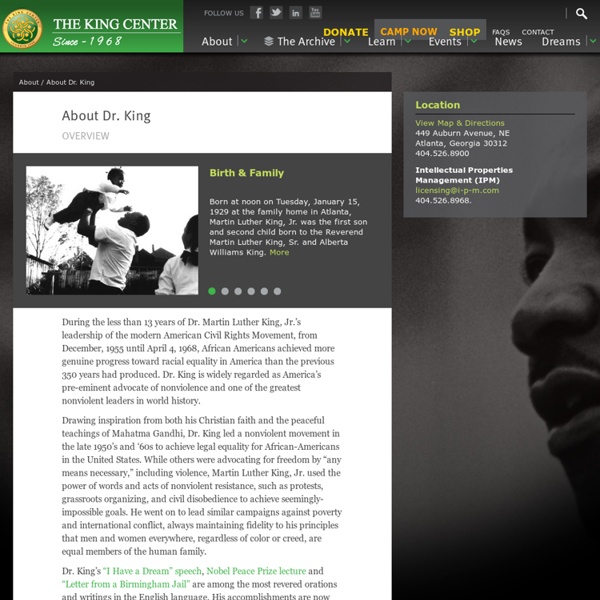About Dr. King
During the less than 13 years of Dr. Martin Luther King, Jr.’s leadership of the modern American Civil Rights Movement, from December, 1955 until April 4, 1968, African Americans achieved more genuine progress toward racial equality in America than the previous 350 years had produced. Dr. King is widely regarded as America’s pre-eminent advocate of nonviolence and one of the greatest nonviolent leaders in world history. Drawing inspiration from both his Christian faith and the peaceful teachings of Mahatma Gandhi, Dr. Dr. Some of Dr. In 1955, he was recruited to serve as spokesman for the Montgomery Bus Boycott, which was a campaign by the African-American population of Montgomery, Alabama to force integration of the city’s bus lines.
Non-Violence is Effective
Rosa Parks and the Bus Boycott
1960 Woolworth's Lunch Counter - Separate Is Not Equal
Sitting for Justice: Woolworth’s Lunch Counter On February 1, 1960, four African American college students sat down at a lunch counter at Woolworth’s in Greensboro, North Carolina, and politely asked for service. Their request was refused. Woolworth lunch counter In Greensboro, hundreds of students, civil rights organizations, churches, and members of the community joined in a six-month-long protest. Greensboro first day Ezell A. Woolworth sit-in On the second day of the Greensboro sit-in, Joseph A.
Civil Rights Act of 1957: Protecting African Americans' Right to Vote
Background: On September 9, 1957, President Dwight D. Eisenhower signed into law the Civil Rights Act of 1957.
1965 Bloody Sunday
1963 The March on Washington
I Have A Dream Speech
Martin Luther King Jr. is celebrated today, Jan. 17, 2011, just two days after he would have turned 82 years old. It’s a great day to revisit the “I Have A Dream” speech he delivered in 1963 in Washington, D.C. Scroll down to read the text in full below. Want to see MLK Jr. himself deliver the “I Have A Dream” speech? I am happy to join with you today in what will go down in history as the greatest demonstration for freedom in the history of our nation.Five score years ago, a great American, in whose symbolic shadow we stand today, signed the Emancipation Proclamation.
The End of the Movement
5 Reasons the Civil Rights Act of 1964 Is Just as Relevant Today
Sixty-two years ago this month, the Civil Rights Act of 1964 ended segregation in public places and prohibited discrimination on the basis of race, ethnicity, religion, sex or national origin. Prior to the Act of 1964, African-Americans faced enormous challenges that were permissible by law including: discrimination in employment, less access to quality housing, disenfranchisement, as well as continued struggles to integrate public schools 10 years after Brown v. Board of Education of Topeka. One of the greatest achievements of the civil rights movement, the Civil Rights Act led to greater social and economic mobility for African-Americans across the nation and banned racial discrimination, providing greater access to resources for women, religious minorities, African-Americans and low-income families. Despite the tremendous progress our country has made since 1964, the Civil Rights Act must continue to shape our nation’s definition of and access to equal opportunity. 1. 2. 3. 4. 5.
Leading Up to the Movement
Related:
Related:



